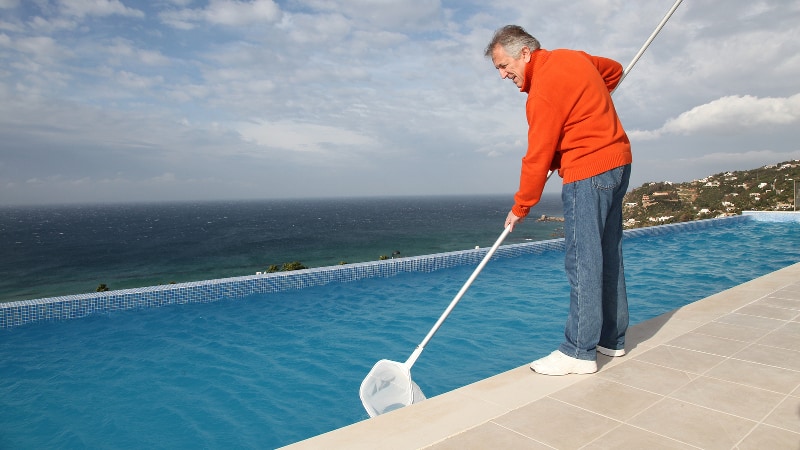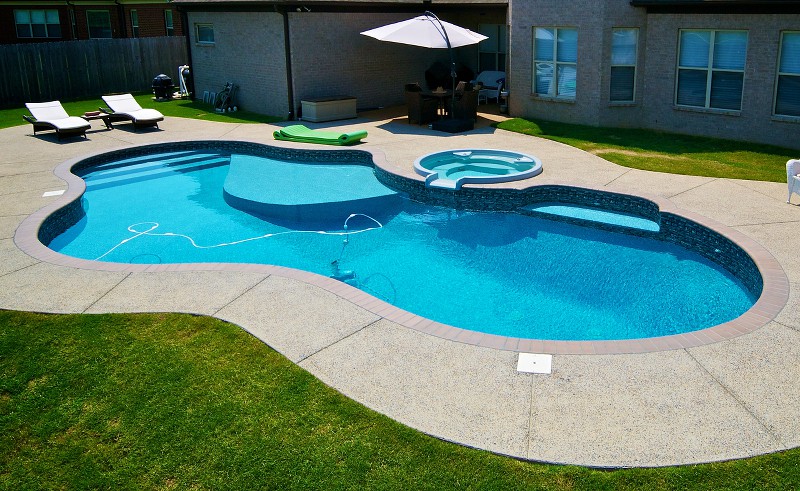
At the risk of stating the obvious, swimming pools are expensive. The typical inground pool goes for $25,000 and up. Even a high-end above ground pool can run tens of thousands, particularly if you factor in the cost of an attached deck and other goodies.
In short, before you get too far into the process of getting a backyard pool, you have to figure out how to pay for it. For many people, that means taking out a pool loan or securing some other form of financing. But what if your credit rating is less than stellar? Should you abandon your dreams of owning a pool?
Maybe not. While the path is more difficult, getting swimming pool financing with poor credit isn’t impossible. Here are five things to keep in mind before embarking on your search for a pool loan:
1. Make sure you can actually afford a pool
Before we get to the real tips, we have to nag a little bit. Pools are pricey luxury features that don’t necessarily increase your property value – at least not enough to offset the cost of installing one. Depending on how they’re designed and built, they can also be expensive to maintain. In other words, you really need to look with open eyes at the total cost of owning a pool before you commit to anything.
Of course, you won’t really know if you can afford a pool until you find out what type of loan you can get. Whatever the terms are, don’t let the promise of a new pool cloud your judgement on whether you will be able to pay off the loan. Overextending yourself when you already have bad credit will only make things worse.
2. Check into a home equity loan or home equity line of credit
If you own a home – and you probably do if you’re contemplating a pool – then you may already have access to one of the best ways of financing home improvement projects. While they work slightly differently, home equity loans and home equity lines of credit both take advantage of the equity in your home to secure a loan. Because they use your house as collateral, these options typically offer better terms than other types of loans – even if you have a poor credit rating.
Of course, if you don’t have a lot of equity in your home, this type of financing is off the table. There’s also the fact that you could lose your home if you fail to pay back what you borrowed. For more information, see this article from the FTC.
3. Look under every nook and cranny for the best terms
Shopping around is standard advice for any major financial decision, but when it comes to securing a swimming pool loan with bad credit, it’s extra-important. Your current bank is one obvious place to turn to for a home improvement loan, but you might be surprised at how many other options there are. Look into online banks, loans from pool companies, and any programs you might qualify for based on special status (as an employee or a veteran, for example). Some sources of financing are far more forgiving of subpar credit than others.
If you’re trying to pay for an above ground pool, you may also want to look into a layaway program. That said, layaway programs have many detractors, so make sure you read the terms and understand all the fees involved before signing on.
4. Keep your project scope under control
Keeping a shrewd eye on your installation costs will reduce the amount of financing you need, lowering your risk and potentially improving the terms of the loan. Getting bids from multiple pool contractors is an important step that can save you a lot of money, but keep in mind that you might pay for “discount” materials and workmanship later on. A better idea is to hire a good-but-affordable pool builder, and cut expenses by going with a smaller pool and/or fewer features.
5. Improve your credit rating before you get a pool loan
Remember that you always have the option to put off pool installation until you can improve your credit rating – and it may not take as long as you think. There are many simple things you can do to get that score up, such as zeroing out credit card balances and paying your bills on time. If you take those steps and still have money left over, you can even start to save up for your new pool. That will reduce the size of the loan you will eventually need, or maybe even eliminate the need for a loan altogether.
Getting a swimming pool involves a lot of big decisions, and none are bigger than the question of how to pay for it. Financing a pool with bad credit is one thing – getting decent terms for a loan you can actually pay off is another. Given the cost of a new pool, it pays to do your homework and look for the best option, even if that option is to hold off until you’re on stronger financial footing.







